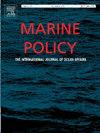海洋经济发展示范区能否实现经济发展与生态保护的可持续平衡:来自中国沿海城市的证据
IF 3.7
2区 社会学
Q2 ENVIRONMENTAL STUDIES
引用次数: 0
摘要
解决海洋可持续发展的困境,需要在经济增长和生态保护之间寻求平衡。本研究以2004 - 2022年中国47个沿海城市的数据为基础,将海洋经济发展示范区政策作为准自然实验。构建了差异中差异(DID)模型,对滨海经济开发区政策能否实现沿海经济发展与生态保护之间的平衡进行了评价。研究结果表明,综合考虑模型的有效性、内生性和稳健性,滨海开发区政策不仅促进了沿海地区的经济增长,而且改善了生态质量。异质性分析表明,与东部和南部海洋经济圈相比,北部海洋经济圈的政策效果仍有较大的优化空间。此外,与环境监管政策的协同效应可以放大平衡效应。机制分析表明,绿色创新是中部经济开发区经济发展与生态保护相协调的核心路径,绿色协同创新机制优于绿色自主研发机制。成本分析表明,与实施生态保护相比,促进经济转型是滨海经济开发区平衡沿海经济发展与生态保护的首选方案。空间分析结果表明,新开发区的空间溢出效应虽然导致了帕累托改善,但符合区域协调发展的要求。研究认为,未来经济开发区必须统筹经济发展与生态保护,为实现海洋经济绿色协调发展的根本目标服务。本文章由计算机程序翻译,如有差异,请以英文原文为准。
Can Marine Economic Development Demonstration Zones (MEDDZs) achieve a sustainable balance between economic development and ecological protection: Evidence from Chinese coastal cities
Resolving the dilemma of marine sustainable development requires seeking a balance between economic growth and ecological protection. This study treats the policy of Marine Economy Development Demonstration Zones (MEDDZs) as a quasi-natural experiment, relying on data from 47 coastal cities in China from 2004 to 2022. A difference-in-differences (DID) model is constructed to evaluate whether the policy of MEDDZs can achieve a balance between coastal economic development and ecological protection. The findings indicate that the policy of MEDDZs not only drives economic growth in coastal areas but also improves ecological quality, this result holds after considering the validity, endogeneity and robustness of the model. Heterogeneity analysis reveals that, compared to the eastern and southern marine economic circle, there is still considerable room for optimization of the policy effects in the northern marine economic circle. Moreover, synergies with environmental regulation policies can amplify the balancing effects. Mechanism analysis shows that green innovation is the core path for balancing economic development and ecological protection in the MEDDZs, and the green collaborative innovation mechanism performs better than the green independent research and development mechanism. Cost analysis suggests that, compared to implementing ecological protection, promoting economic transformation is the preferred solution for the MEDDZs to balance coastal economic development and ecological protection. Spatial analysis shows that, although the spatial spillover effects of the MEDDZs lead to Pareto improvements, they align with the requirements of regional coordinated development. This study concludes that, in the future, the MEDDZs must balance economic development and ecological protection to serve the fundamental goal of green and coordinated development of the marine economy.
求助全文
通过发布文献求助,成功后即可免费获取论文全文。
去求助
来源期刊

Marine Policy
Multiple-
CiteScore
7.60
自引率
13.20%
发文量
428
期刊介绍:
Marine Policy is the leading journal of ocean policy studies. It offers researchers, analysts and policy makers a unique combination of analyses in the principal social science disciplines relevant to the formulation of marine policy. Major articles are contributed by specialists in marine affairs, including marine economists and marine resource managers, political scientists, marine scientists, international lawyers, geographers and anthropologists. Drawing on their expertise and research, the journal covers: international, regional and national marine policies; institutional arrangements for the management and regulation of marine activities, including fisheries and shipping; conflict resolution; marine pollution and environment; conservation and use of marine resources. Regular features of Marine Policy include research reports, conference reports and reports on current developments to keep readers up-to-date with the latest developments and research in ocean affairs.
 求助内容:
求助内容: 应助结果提醒方式:
应助结果提醒方式:


